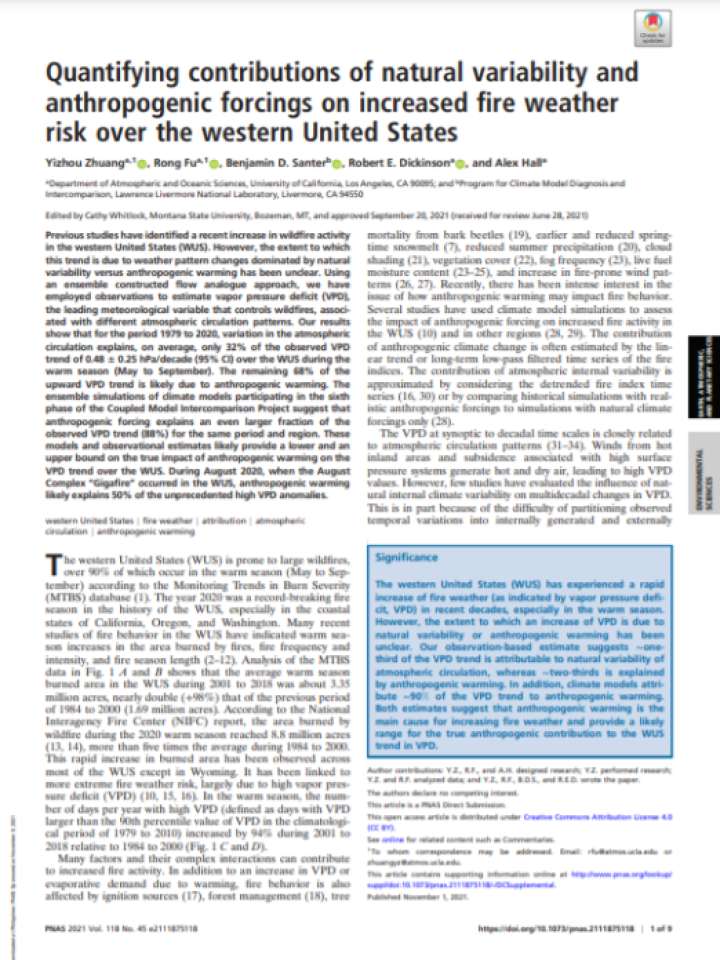Quantifying contributions of natural variability and anthropogenic forcings on increased fire weather risk over the western United States
This study explores the extent to which the increase in wildfire activity in the western United States (WUS) is due to weather pattern changes dominated by natural variability versus anthropogenic warming, a relationship that has been unclear with previous studies. Using an ensemble constructed flow analogue approach, the researchers employed observations to estimate vapor pressure deficit (VPD), the leading meteorological variable that controls wildfires, associated with different atmospheric circulation patterns.
The study shows that for the period 1979 to 2020, variation in the atmospheric circulation explains, on average, only 32% of the observed VPD trend of 0.48 6 0.25 hPa/decade over the WUS during the warm season (May to September). The remaining 68% of the upward VPD trend is likely due to anthropogenic warming. The ensemble simulations of climate models participating in the sixth phase of the Coupled Model Intercomparison Project suggest that anthropogenic forcing explains an even larger fraction of the observed VPD trend (88%) for the same period and region. These models and observational estimates likely provide a lower and an upper bound on the true impact of anthropogenic warming on the VPD trend over the WUS.
Explore further
